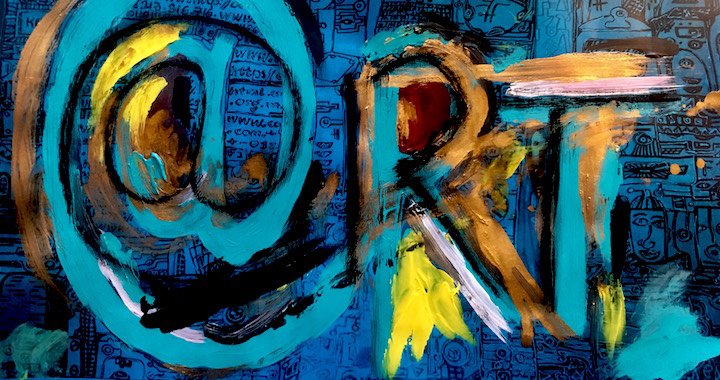
Are the internet and social media helpful tools for art, or do they devalue it?
Internet, social media and art
04/01/2019
It’s difficult to say anything new regarding the contradictory nature of the internet and social networking: infinite possibilities for self-education on the one hand, fake news and disinformation on the other; high-quality entertainment on the one hand, a sea of intellectual junk food on the other; meaningful horizontal communication on the one hand, trolling and online violence on the other. Much of this also pertains to the art world, which on the internet – as well as in real life – is wedged between the millstones of quality/meaning and worthlessness/tastelessness. While for many artists the internet has helped them to expand their creative expression, it also encourages exponential overproduction. Likewise, the extent to which the internet has a positive or negative influence on people’s “visual literacy” still remains an open question. Considering the challenges of our day and age, this time the last question on the Arterritory survey is about the relationship between art and the internet/social media.
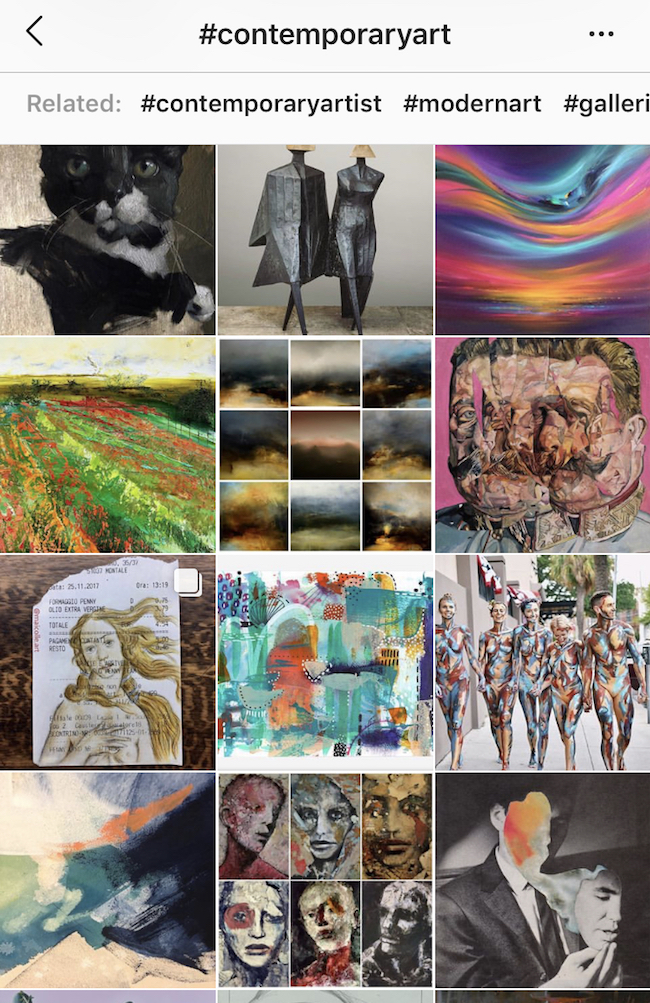 There are more than 22 million photos with hashtag #contemporaryart @instagram.com
There are more than 22 million photos with hashtag #contemporaryart @instagram.com
Joseph Kouli
art collector
When I started collecting twelve years ago, I barely had any documentation for exhibitions and artworks. Now you have everything everywhere prior to openings. Which is, on one hand, a good point, and democratic, too. But on the other hand, it values photogenic works. Is being photogenic a quality? I’m not sure. It means you look better in a photo than in real life. This is misleading. And it always works on the same stimuli.
On top of that, it fosters physical, three-dimensional art. The worst thing about it: you end up having this feeling of sameness in terms of what gets ‘likes’ and becomes popular. I have known for a long time that a photo of an artwork is not the artwork. Partly to state this point is why most of the photos of my collection in my first catalogue were intentionally blurred.
I think it is preferable not to overestimate the internet and social media. I am glad that I can easily contact any gallery and have instant portfolios or exhibition views. And, that I can even discover unsolicited stuff thanks to a stupid algorithm, which, perhaps, actually ends up narrowing what I see.
But it is only a medium, and it has to be considered as such. Whether an artist and their art is good is not related to it. What makes art good is talent, and it will always be so. What a collector, or anyone, should do is visit exhibitions and confront the work.
James Beckett
artist
I was just talking to my mom about this today. I think it is good for connecting and feeling what others are up to, kind of like an extended community prick board, but bad for concentration habits. I'm personally pretty addicted to facebook and not happy about that, but think it can be a good platform if re-engineered in terms of algorithms and preferences. If we are confronted with a wider spectrum of subject matter, outside of our established interests, then great. Otherwise its a bit of suicidal navel gazing.
Milena Orlova
art critic, Editor-in-Chief of The Art Newspaper Russia (Moscow)
Artists, galleries and museums have found a new instrument for publicity and promotion of their works, exhibitions and events, and that is wonderful: it means that access to a wide audience has become more democratic. There is now the option of foregoing the mediation of an art dealer to sell art. Simultaneously, due to the sheer scope, the stage of an expert’s evaluation, that is, the stage of art criticism, is often left out, which means that it is sometimes difficult for the potential consumer to understand what it is exactly that he or she is offered, judging merely from the selection of images. That said, the critics have also acquired a free platform: many Facebook posts or Telegram channels, unfettered by any kind of ethics of the traditional mass media, are so much more interesting to read than the customary ‘normal’ articles. Therein lies another problem, however: stories like these are quite difficult to convert into money, and even the most successful of art bloggers boasting a million subscribers are often forced to look for sources of income somewhere else, treating their actual main occupation as a volunteer job or a hobby.
The most positive role is also played by various educational online projects ‒ from features that allow viewing museum masterpieces in the highest of resolutions to free lectures. On the whole, I find these opportunities marvellous, and it is pointless to speak of devaluation here: after all, you are not going to blame the hammer when you hit your own finger by accident, are you? You just have to learn to handle it properly.
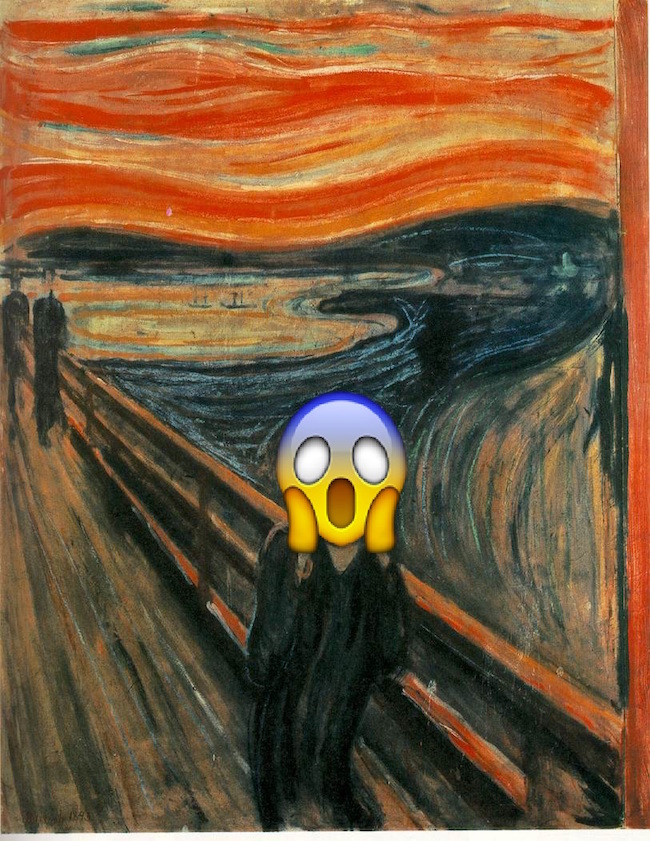 Edward Munk `Scream` has become as Emojinal Art work
Edward Munk `Scream` has become as Emojinal Art work
Gil Bronner
art collector
I don’t really use social media at all. But I assume that it is (or soon will be) used for selling on the same inane level as in fashion.
As far as the classic tools of the internet, such as websites and email, are concerned, of course they facilitate communication and the flow of information. I still try to see art first hand, as much as possible. That’s why it was made.
Viktor Misiano
curator and Editor-in-Chief of the Moscow Art Magazine (Moscow)
I think that the influence of the Internet and social networks is not as pronounced as it used to be. They have simply become a fundamental part of life in general and art life specifically. As far as real art practice is concerned, they largely remain out of the spotlight.
Agniya Mirgorodskaya
commissioner of the Riga International Biennial of Contemporary Art (RIBOCA)
The Internet and social networks, particularly Instagram, are the reason why ‘instagenicism’ has started to matter in art today. The artists whose works are photographed and posted by more people often become more famous than those whose works are not defined by their picturesqueness. I find this trend quite sad really.
Alisa Savitskaya
curator of the Volga‒Vyatka branch of the National Centre for Contemporary Art (Nizhny Novgorod)
One of the indisputable achievements of the latest edition of Manifesta in comparison with previous years was its presence on the social networks. For instance, detailed documentation of the works was posted on Instagram; there were broadcasts of performances and various events of the parallel programme. The First Riga Biennale also deserves to be praised for its virtual activities, delighting with relevant and informative posts on the social networks and even a whole online catalogue.
I find the fact that information on art is becoming more accessible a positive trend. Knowledge that is open to a vast audience does not detract from the value of art, expanding, alongside publicity, its areas of influence and responsibility instead. In no way does it cancel the importance and necessity of a personal encounter between the viewer and the work ‒ even more so because countless brilliant art projects still evade documentation. For instance, the works of the majority of my favourite artists live only in my head and in photos so blurry that I would be ashamed to post them even on a private Instagram account for the eyes of close friends only.
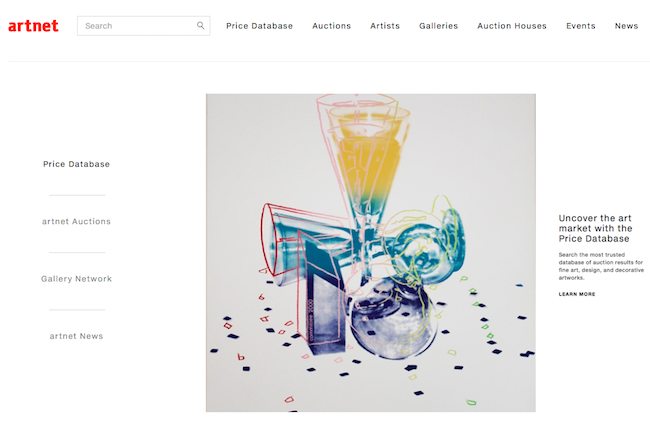
Contemporary art internet market Artnet.com
Stepan Subbotin
member of the ZIP art group (Krasnodar)
On the whole, it is positive, because it creates space for communicating with the whole world, without any borders. On the other hand, I find many social networks dull these days, like Facebook or Vkontakte, for instance: I mostly tend to stumble on all sorts of boring comments, while many discussions taking place there are localized: comments are posted by the usual suspects whose views, as often as not, are obvious from their avatars. It seems that instead of a shared platform for discussions and communication, Facebook is, after all, working on building a territory of isolated circles of alienation that consume too much of your time and attention.
Valentin Dyakonov
curator, the Garage Museum of Contemporary Art (Moscow)
Since the Internet and the social networks are technical means without a will of their own, it would not be quite correct to evaluate their influence in terms of ‘good’ or ‘bad’.
Olga Temnikova
co-owner and head of the Temnikova & Kasela Gallery (Tallinn)
It is hard to say but I still gravitate towards finding it positive. Clearly, non-specialists are finding it increasingly hard to navigate these media; however, for a professional, particularly one not residing in one of the main art capitals, the Internet as such and Instagram in particular is a very practical thing ‒ perhaps even an indispensable one.
Marko Mäetamm
artist
Internet and social media itself are not good or bad. We can use them for good or for bad. I personally find both internet and social medial good for giving my work and doings visibility, plus keeping and creating connections. It is also exciting for me to see how we become influenced by these things and how especially social media is changing or life, our ways of speaking, our relationships. And how influential and addictive it all is. It is actually quite inspirational and has become source for many of my recent works. So I consider it rather helpful than devaluing.
Māris Vītols
curator and collector, head of the association “Latvijas kultūras projekti”
The development of the internet has had a huge impact on the globalisation of art processes – the art world has become closer and better connected. Thanks to these unlimited possibilities of communication, the gaps between the centres and the peripheries of the art world are diminishing, which is undoubtedly a benefit for all participants of artistic processes.
Ivars Drulle
artist
Both, of course. But if I’d have to choose only one answer, I would say they devalue it. Although a huge amount of information and art history are now available with just a few clicks of your mouse, the world that is connected to the internet is becoming more homogeneous. For example, if I give my students an assignment that requires their imagination, most of them search the key words on Pinterest and Instagram, and they all end up with the same images; or they just copy the work of popular Youtubers.
Devaluation is also evidenced by the overly rehashed case of the Banksy stencil that partially shredded itself seconds after being sold at auction. In the following days, drawings that shred into strips began to appear everywhere; two weeks later, there was a barrage of DIY videos on how to make a sexy t-shirt with a Banksy-style shredded fringe... They say that this year’s most popular Halloween costumes were based on the theme of ‘shredded artwork’. To prevent myself from throwing up, I’d rather not hear anything more about this particular incident.
Vita Liberte
founder of the VV Foundation and a patron of the arts
The role of social media in the art business is undeniably invaluable. Last year, more than 80 percent of all generation Y art-buyers bought art online. However, artists must ensure that they are in control of how their work is distributed and protected on social media; or, they should simply be timely in terms of procuring legal advice.
Karina Vissonova
design researcher and innovation strategist
On the one hand, social networks aid in image creation, and artists do need an internationally accessible image. But on the other hand, everyone with a smartphone is taking pictures left and right, and the social networks are full of images of dubious quality; we are no longer able to distinguish qualitative information from...I don’t even know what to call it anymore. Regarding art in general, I think that social networks are not an aid – perhaps just to artists in terms of their personal individual use.
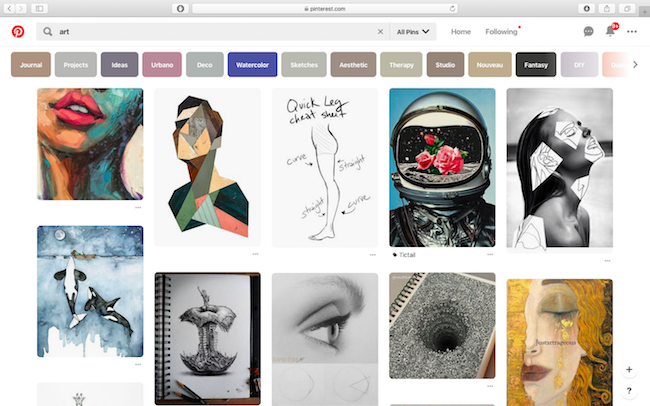
Art @Pinterest
Artūrs Analts
designer
Definitely both! It is clear that social networks work well for quick and short-term visibility, and that more complex topics can be overlooked. At the same time, this is the modern information environment, and social networks are used not only as an aid for the dissemination of works and ideas, but they also naturally impact the history of artistic development. Works must become straightforward and easy to comprehend and absorb. It is through this straightforwardness that also very complex social, political, economic or ecological themes can be passed on.
Natalia Serkova
art theorist, co-founder of the TZVETNIK project (Moscow)
The Internet is changing the very method of producing art, and it should not be judged in terms of ‘good’ or ‘bad’: it is a given of the current state of affairs, and we have to work with it. At the same time, as a co-author of the blog that promotes showing art online, I have a very positive view of said trend. Art is leaving its niche and starting to exist on the same level as stars of mass culture, Internet memes and popular search engine entries. It does impose a certain set of obligations on an artist ‒ for instance, they now need to create the kind of art that manages to capture the viewer’s gaze instantly while still retaining the status of art instead of transforming into a selection of superficial and trite products. It is a very difficult task, a real challenge for the young artists, and I am happy that many of them manage to deal with it brilliantly. The bottom line is, these new conditions of showing and dealing art are exactly the force that makes art move forward ‒ even when it may seem that there is no longer anywhere left to go.
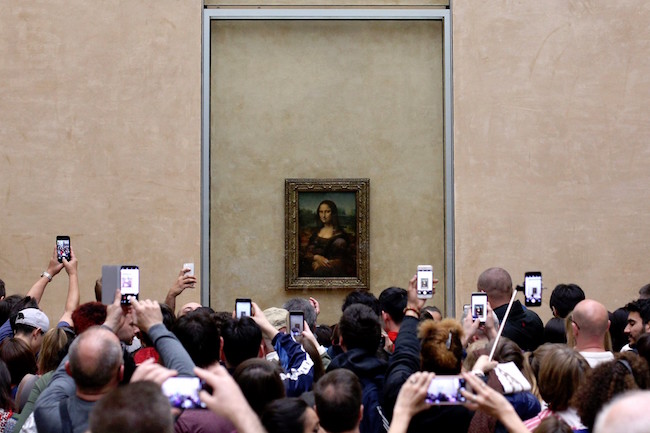
Tourists at 'Mona Lisa' painting. Photo: Pedro Fuiza